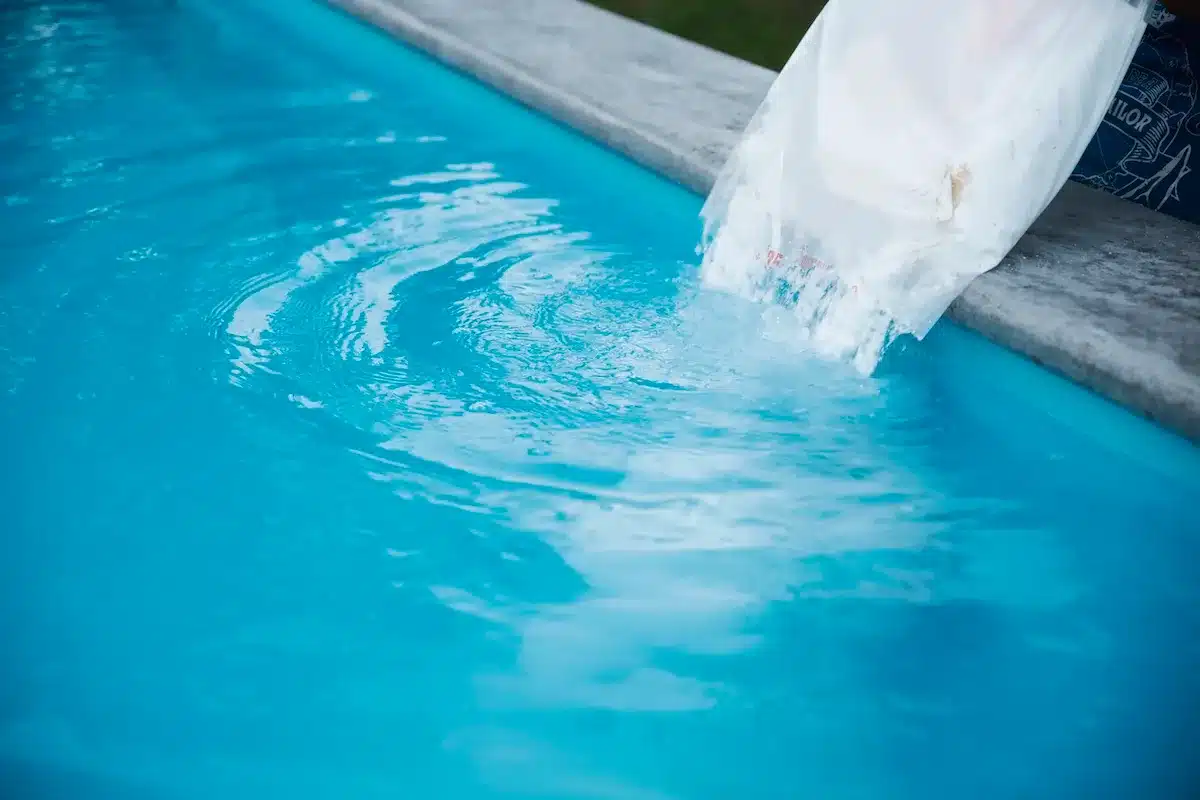How much swimming pool salt do I need?
In a pool that uses salt electrolysis, you need to top up the salt every now and then. Although the salt does not evaporate and can, in essence, circulate forever, sometimes the salt drains out during the backwash process, salt is lost due to rain showers, splashes out, and can even be lost on swimwear.
Most electrolysis devices indicate when they need topping up with salt, but how much should you add? With too little salt, you risk the swimming pool water not being disinfected properly and bacteria or algae gaining a foothold. And too much salt can damage your equipment.
Table of Contents
How much salt should I add to my swimming pool?
It is not a difficult calculation and there are three issues you must consider:
- What is the volume of your pool?
- What is the current salt level of your pool?
- What is the desired salt level for your pool?
Once you know these details, we have good news. ZOUTMAN has made a calculator which can tell you how much salt you need for your pool in an instant.
How do I measure the volume of my pool?
If you installed your own pool, you can find the volume (in litres) on your invoice or you can ask your pool installer.
But if you don’t know, don’t panic. A simple, primary school formula will give you the answer you need. The volume of your (rectangular) pool is calculated by multiplying the length by the width by the depth in metres. This will then give you the volume in cubic metres. Because 1 cubic metre equals 1000 litres, you then need to multiply the number of cubic metres by 1000. If you do not have a rectangular swimming pool, you should ask your installer for details of the volume.
How do I measure the current salt level of my pool?
The salt level of water is expressed as ppm or parts per million. This is a measurement unit that is used to express very low quantities. If you have a new pool that has been filled with water for the first time, the salt level will (of course) be 0 ppm.
The salt level of existing pools can be measured using various methods. The salt level is often indicated on your device. If that is not the case, you can buy test strips or a digital meter.
What is the desired salt level of my pool?
According to various websites, the ideal salt level is 3200 ppm. 1 ppm of salt in water is the same as 0.001 gram. More specifically, this means that there is 0.0032 grams of salt in a litre of water (or 3.2 kg salt in 1000 litres of pool water).
The reality, however, is that the ideal salt level depends on your type of device. So, check the manual for your electrolysis device or contact your installer if you cannot find the information.
How should I add the salt to my swimming pool?
- Place the bag(s) of swimming pool salt along the edge of the pool and add the salt gradually throughout the pool. This is ideal for good distribution of the salt around the pool.
- Add the salt in the evening if possible so that it has plenty of time to dissolve and your device has time to turn it into chlorine.
- Check the salt level in your swimming pool water a few hours after you have added the salt.
How long will it take for the salt to be dissolved in the pool?
The time required for the salt to dissolve in your swimming pool depends on various factors, including the size of the pool, the quantity of salt you have added, and the temperature of the water.
In general, it will take 12 to 24 hours for the salt to completely dissolve in the pool. You can speed up the process by distributing the salt around the pool when pouring it in and then mixing well using a pool brush.


